Results 11,831 to 11,840 of 12089
Thread: Anandtech News
-
08-03-23, 06:22 PM #11831
Anandtech: AMD to Introduce New Enthusiast-Class Graphics Cards This Quarter
As part of their quarterly earnings call this week, AMD revealed that the company is getting ready to launch new enthusiast-class Radeon RX 7000-series graphics cards in the coming months. To date, the company has launched cards for the top and bottom portions of their product stack, leaving a noticeable gap for higher performing cards that the company needs to fill to fully flesh out the current card lineup.
"We are on track to further expand our RDNA 3 GPU offerings with the launch of new, enthusiast-class Radeon 7000 series cards in the third quarter," said Lisa Su, chief executive of AMD, at the company's earnings call with analysts and investors.
So far, AMD has introduced four RDNA 3-based Radeon RX 7000-series desktop graphics cards aimed at diversified market segments: three Radeon RX 7900-series offerings for enthusiasts who can spend between $650 and $1000 on a graphics card, and the Radeon RX 7600 product for mainstream gamers at roughly $270. This has left an empty space for higher performing cards for cost-conscientious enthusiasts that, for the moment, is being met by NVIDIA's GeForce RTX 4000-series as well as previous-generation Radeon RX 6000-series boards. In particular, AMD lacks currently lacks something current to compete with NVIDIA's modestly well received GeForce RTX 4070.
AMD is believed to have only one GPU left in its Navi 30 range, Navi 32, which would slot in between the current Navi 31 and Navi 33 parts. Navi 32, in turn, is expected to power both Radeon RX 7700 and RX 7800 product families. That said, one thing that remains to be seen is whether the company will decide to go after volume first this quarter and start things off with the RX 7700 series, or after higher margins and reveal its Radeon RX 7800 series first.
AMD's gaming segment revenue was $1.6 billion in Q2 2023, down 4% year-over-year and 10% sequentially primarily due to lower sales of gaming graphics cards. Unit sales of graphics processors in Q2 are typically lower than their shipments in Q1, so a 10% quarter-over-quarter decrease is not surprising. Meanwhile, a 4% drop YoY indicates that appeal of AMD's discrete GPUs was lower in Q2 2023 compared to Q2 2022, an indicator that the company needs new products.
More...
-
08-04-23, 12:53 PM #11832
Anandtech: Cloud Provider Gets $2.3 Billion Debt Using NVIDIA's H100 as Collateral
CoreWeave, an NVIDIA-backed cloud service provider specializing in GPU-accelerated services, has secured a debt facility worth $2.3 billion using NVIDIA's H100-based hardware as collateral. The company intends to use the funds to procure more compute GPUs and systems from NVIDIA, construct new data centers, and hire additional personnel to meet the growing needs for AI and HPC workloads.
CoreWeave has reaped enormous benefits from the rise in generative AI due to its large-scale cloud infrastructure as well as an exclusive relationship with NVIDIA, and its ability to procure the company's H100 compute GPUs as well as HGX H100 supercomputing platforms amid shortages of AI and HPC hardware. Since many AI and HPC applications used nowadays were developed for NVIDIA's CUDA platform and API, they require NVIDIA's GPUs. Therefore, access to H100 gives CoreWeave a competitive edge over traditional CSPs like AWS, Google, and Microsoft.
In addition to offering its customers access to advanced hardware, CoreWeave collaborates with AI startups and major CSPs — which are essentially its competitors — to build clusters that power AI workloads. These rivals — AWS and Google — have their own processors for AI workloads, and they continue to develop new ones. Still, given the dominance of CUDA, they have to offer NVIDIA-powered instances to their clients and are currently grappling with NVIDIA GPU supply limitations.
CoreWeave's competitive advantage, facilitated by access to NVIDIA's latest hardware, is a key factor in the company's ability to secure such substantial credit lines from companies like Magnetar Capital, Blackstone, Coatue, DigitalBridge, BlackRock, PIMCO, and Carlyle. Meanwhile, CoreWeave has already gotten $421 million from Magnetar at a valuation exceeding $2 billion.
Notably, this is not the first example of an NVIDIA-supported startup reaping substantial benefits from its association with the tech giant. Last month, Inflection AI built a supercomputer worth hundreds of millions of dollars powered by 22,000 NVIDIA H100 compute GPUs.
Meanwhile, this is the first time NVIDIA's H100-based hardware was used as collateral, emphasizing these processors' importance in the capital-intensive AI and HPC cloud business. Moreover, this massive loan indicates the growing market for private asset-based financing secured by actual physical assets.
"We negotiated with them to find a schedule for how much collateral to go into it, what the depreciation schedule was going to be versus the payoff schedule," said Michael Intrator, CoreWeave's CEO. "For us to go out and to borrow money against the asset base is a very cost-effective way to access the debt markets."
The company recently announced a $1.6 billion data center in Texas and plans to expand its presence to 14 locations within the U.S. by the end of 2023.
More...
-
08-07-23, 05:54 PM #11833
Anandtech: Kioxia's CD8P SSD Unveiled: Up to 30.72 TB, PCI 5.0 x4 Interface
Hyperscale data centers have very specific requirements for different tiers of storage devices: some tiers need maximum performance, and others demand maximum storage density. Kioxia's new CD8P drives for data centers seem to combine both high storage capacity of up to 30.72 TB and high sequential read performance of up to 12,000 MB/s and up to 2 million random read IOPS, which somewhat blurs the lines between storage tiers and provides new opportunities.
Kioxia's CD8P single-port drives are based on the company's proprietary controller, firmware, and time-proven 112-layer BICS 5 3D TLC NAND memory. The NVMe 2.0-compliant controller and firmware fully support enterprise-grade features like the company's exclusive flash die failure protection, power loss protection, end-to-end data protection, sanitize instant erase (SIE), and self-encrypting drive (SED). Since the new SSDs are designed for hyperscale data centers, they come in E3.S and U.2 form factors.
Regarding performance, Kioxia's new CD8P SSDs offer up to 12,000/5,500 MB/s sequential/write speed and up to 2,000,000/400,000 random read/write 4K IOPS. Meanwhile, there will be two versions of CD8P: CD8P-V for mixed-use applications with up to three drive writes per day with capacities up to 12.8 TB and CD8P-R for read-intensive workloads with up to one drive writes per day capacities of 30.72 TB.
An avid reader will undoubtedly notice that the CD8P family of SSDs is not Kioxia's first lineup of high-capacity drives with a PCIe Gen5 x4 interface, as the company has been shipping its CM7-series SSDs for about a year now. This is, of course, correct, but Kioxia's CM7 is designed for enterprise environments, which is why they support dual-port for extended availability, FIPS SED capability, and maximized performance (up to 14 GB/s and 2.7 million 4K IOPS). Hyperscalers barely need such functionality, and the lack of it will probably make CD8Ps slightly cheaper than CM7 drives.
Kioxia positions its CD-series SSDs for s broad range of scale-out and cloud workloads, and indeed, these applications will benefit from their extended performance and capacity. In addition, these new drives could be used for various AI-oriented workloads (particularly on the edge) that can take advantage of high storage density, high performance, and prices that promise to be below those of enterprise-oriented CM7.
Kioxia has not decided when it plans to start shipping its CD8P SSD lineup of SSDs. Still, since hyper scalers need some time to validate and qualify the new storage devices, these new drives will take some time to leave assembly factories. Meanwhile, companies that will use CD8P drives for things like edge AI deployments may deploy these new SSDs somewhat faster if they find them suitable for their workloads.
Gallery: Kioxia's CD8P SSD Unveiled: Up to 30.72 TB, PCI 5.0 x4 Interface

More...
-
08-07-23, 05:54 PM #11834
Anandtech: Gigabyte Launches Low-Profile GeForce RTX 4060 Graphics Card
The relatively low power consumption of Nvidia's GeForce RTX 4060 graphics processor allows graphics card makers to experiment with the form factors of their products. We have already seen Mini-ITX GeForce RTX 4060 graphics cards, and late last week, Gigabyte introduced a low-profile GeForce RTX 4060 that can fit into miniature desktops and provide decent performance in games.
The Gigabyte GeForce RTX 4060 OC Low Profile 8G is based on NVIDIA's AD107 GPU with 3072 CUDA cores that are paired with 8 GB of 17 GT/s GDDR6 memory using a 128-but interface. To justify the OC (overclocked) moniker in the product name, Gigabyte even clocked the graphics processor at 2475 MHz, which is 15 MHz higher than Nvidia's recommendations for the RTX 4060 model.
Using a graphics board that requires an eight-pin auxiliary PCIe power connector, it is equipped with a dual-slot triple-fan cooling system featuring dozens of thin aluminum. We can only guess whether the cooler is quiet and whether it is good enough to enable further overclocking, but at least Gigabyte guarantees a GPU boost clock of up to 2475 MHz.
Touching more on the cooler, it is longer than the printed circuit board itself, making the graphics card 182 mm long, so owners of compact systems should measure their chassis to ensure compatibility. Most low-profile PC cases are pretty long, but there are also tiny chassis that may be too small for this card.
Despite being low profile, Gigabyte's GV-N4060OC-8GL has four display outputs: two DisplayPort 1.4a (up to 4Kp120 or up to 5Kp60) and two HDMI 2.1a (up to 5Kp60 or up to 8Kp60 with DSC), so it can be used for rather serious PCs with up to four monitors.
Gigabyte has not disclosed the recommended pricing of their GeForce RTX 4060 OC Low Profile 8G graphics card. Considering that prices of most GeForce RTX products are hovering around recommended $299 price point, it is unlikely that Gigabyte will attempt to charge a huge premium for the unique form factor of its low-profile GeForce RTX 4060. Still, the compact dimensions are undoubtedly a significant differentiator of this product, and GIGABYTE will likely try to earn something extra from it.
Source: Gigabyte
More...
-
08-08-23, 09:36 AM #11835
Anandtech: TSMC Establishes Joint Venture to Build 12nm/16nm Fab in Europe
TSMC on Tuesday announced plans to establish a European Semiconductor Manufacturing Company (ESMC) joint venture with its partners Bosch, Infineon, and NXP to build a fab near Dresden, Germany. The new 300-mm fab will produce chips on TSMC's 28/22 nm and 16/12 nm-class process technologies, primarily for automotive and industrial sectors. As the project is planned under the European Chips Act framework, TSMC is set to get subsidies to build it.
The proposed ESMC fab will be located near Dresden, Germany, and is slated to have a monthly production capacity of 40,000 300mm wafer starts per month. The fab is set to use TSMC's 28 nm family of production nodes, which includes several specialty manufacturing technologies and a 22 nm low-power fabrication process with planar transistors and 16 nm and 12 nm production technologies featuring FinFETs. The fab, which TSMC will operate, will employ about 2,000 workers and engineers.
ESMC intends to start fab construction in the latter half of 2024 and start making its first products there by the end of 2027. As TSMC planned, the proposed fab will mainly serve automakers based in Germany and Austria, ensuring a steady supply of chips to these companies in the latter half of the decade.
"This investment in Dresden demonstrates TSMC's commitment to serving our customer's strategic capacity and technology needs, and we are excited at this opportunity to deepen our long-standing partnership with Bosch, Infineon, and NXP," said Dr. CC Wei, Chief Executive Officer of TSMC.
Meanwhile, since the fab will only make chips on mature 12/16 nm and 22/28 nm process technologies, automakers will still need to source advanced processors required for self-driving and sophisticated infotainment systems from TSMC's fabs in Taiwan and the U.S. Therefore, companies like Bosch, BMW, Infineon, Mercedes Benz Group, NXP, Stellantis, and Volkswagen Group will be able to get various microcontrollers and sensors from ESMC, their most advanced proprietary components that will define capabilities of their software-defined vehicles will be built in Taiwan or the USA by TSMC or Germany by Intel Foundry Services.
Yet, mature process technologies are required not only for automotive and industrial sectors, but also for various emerging applications that fall under the Internet-of-Things umbrella. These will benefit significantly from TSMC's low-power 22 nm production node and N12e process technology.
"Infineon will use the new capacity to serve the growing demand particularly of its European customers, especially in automotive and IoT," said Jochen Hanebeck, CEO of Infineon Technologies. "The advanced capabilities will provide a basis for developing innovative technologies, products and solutions to address the global challenges of decarbonization and digitalisation."
Financially, the venture is structured such that TSMC will have a 70% stake, with the remaining partners each holding a 10% equity stake. The collective investments for this initiative are forecasted to surpass €10 billion. ESMC is expected to get around €5 billion in subsidies under the Europen Chips Act and from the German government.
Source: TSMC
More...
-
08-08-23, 09:36 AM #11836
Anandtech: Colorful Reveals Mini-ITX GeForce RTX 4060 Ti
Colorful has quietly introduced GeForce RTX 4060 Ti graphics cards in Mini-ITX form-factor that combine compact dimensions and performance of Nvidia's latest Ada Lovelace GPUs. In fact, with the boosted performance of 22 FP32 TFLOPS, Colorful's iGame GeForce RTX 4060 Ti Mini OC is likely the highest-performing Mini-ITX graphics card that has been launched to date.
Looking at the options, Colorful has two iGame GeForce RTX 4060 Ti Mini graphics cards in Mini-ITX form-factor: one with 8 GB of GDDR6 memory and another with 16 GB of GDDR6 SGRAM. Both boards are naturally based on Nvidia's AD106 GPU with 4352 CUDA cores running at 2310 MHz – 2580 MHz, which is slightly higher than Nvidia's recommended 2540 MHz. The board has four display outputs (four DisplayPort, one HDMI), like fully-fledged GeForce RTX 4060 Ti boards.
Since the boards have a relatively simplistic 6+2-phase voltage regulating module (VRM), it is unlikely that the cards were designed with overclocking in mind, so it is doubtful that these devices can be overclocked significantly. Furthermore, they are equipped with a dual-slot single-fan cooling system with four heat pipes, good enough to dissipate 160W ~ 165W of heat generated by Colorful's iGame GeForce RTX 4060 Ti Mini. Still, I doubt this cooler will enable great overclocking potential.
Colorful's iGame GeForce RTX 4060 Ti Mini graphics cards are said to be 199.5 mm long, which is somewhat longer than typical Mini-ITX motherboards, so owners will probably have to ensure compatibility of these AIBs with the chassis.
Compact Mini-ITX PCs are rather popular among gamers these days, but due to the high power consumption of Nvidia's previous-generation graphics processors did not allow makers of add-in-boards to make Mini-ITX versions of their midrange products. With Ada Lovelace, Nvidia opted to reduce the power consumption of its GeForce RTX 4060-series, which enabled makers of AIBs to experiment with form factors and come up with Mini-ITX versions of GeForce RTX 4060 Ti.
Unfortunately, Colorful's graphics cards are rare guests in North American and European retailers, so those interested in the company's iGame GeForce RTX 4060 Ti Mini graphics cards should probably buy directly or from retailers like JD.com.
Given that Nvidia's GeForce RTX 4060 Ti GPU is readily available from the green company, other makers of graphics cards may follow Colorful with their Mini-ITX versions at some point.
More...
-
08-08-23, 07:41 PM #11837
Anandtech: NVIDIA Completes ProViz Ada Lovelace Lineup with Three New Graphics Cards
When NVIDIA began to roll out their Ada Lovelace architecture to the workstation market, the company introduced its new flagship RTX 6000 Ada graphics card meant to offer the highest performance possible as well as its quite spectacular RTX 4000 SFF board that delivers formidable performance in a tiny package. The gap between the two solutions is vast, and on Tuesday, the company finally unveiled new products that fill it.
NVIDIA's Ada Lovelace-based RTX-series professional graphics cards — the workstation-oriented RTX 4000 20GB, RTX 4500 24GB, RTX 5000 32GB, and the datacenter-bound L40S — graphics are designed for demanding graphics and artificial intelligence workloads, such as computer-aided design, digital content creation, real-time rendering, and basic simulations that are fine with FP32 precision. The new graphics solutions complement NVIDIA's Ada Lovelace-based workstation boards that have been announced: the midrange RTX 4000 SFF and the ultra-high-end RTX 6000 Ada. Meanwhile, NVIDIA's previous-generation offerings will continue to serve entry-level workstations based on its Ampere and Turing architectures.
Now, let us cover the new graphics boards in more detail.
NVIDIA's RTX 4000 20GB is powered by the AD104 graphics processor with 6,144 CUDA cores that promises a peak performance of 26.7 FP32 TFLOPS, which is considerably higher than 19.2 FP32 TFLOPS delivered by the RTX 4000 SFF that features the same GPU with the same configuration albeit working at lower clocks and therefore consuming up to 130W. Unlike the small form-factor board, this uses a full-height PCB but a single-slot cooling system. The novelty is slated for a September release with an MSRP of $1,250.
The more powerful Ada Lovelace-based workstation board is called the RTX 4500, and it uses the AD104 GPU with 7,680 CUDA cores to deliver a compute performance of up to 39.6 FP32 TFLOPS at up to 210W. The board employs a dual-slot cooling system and will be available for $2,250 sometime in October.
Finally, NVIDIA is introducing its RTX 5000 professional graphics card that utilizes the AD102 graphics processor with 12,800 CUDA cores (i.e., a very significant cut down) to achieve a compute performance of 65.3 FP32 TFLOPS at 250W. This board is set to hit the market now for $4,000, which is significantly lower compared to $6,800 for NVIDIA's flagship RTX 6000 Ada product.
NVIDIA's latest ProViz graphics boards are set to be integrated into the upcoming workstation lineups of renowned companies, including Boxx, Dell, HP, Lambda, and Lenovo. Additionally, the graphics cards will be available for purchase from select graphics card makers like Leadtek, PNY, and Ryoyo, as well as major resellers like Arrow and Ingram. Meanwhile, there will be an Ada Lovelace professional graphics board that will unlikely be available separately.NVIDIA Ada Lovelace Professional Graphics Cards RTX 4000 SFF RTX 4000 RTX 4500 RTX 5000 RTX 6000 L40S Ada GPU AD104 AD104 AD104 AD102 AD102 AD102 CUDA Cores 6,144 6,144 7,680 1,2800 1,8176 1,8176 Memory 20 GB 24 GB 32 GB 48 GB Power 70W 130W 210W 250W 300W ? Cooling dual-slot, blower single-slot, blowerdual-slot, blowerpassive MSRP $1,250 $1,250$2,250 $4,000 $6,800 ?
Catering to the needs of professionals using remote workstations, NVIDIA is launching the L40S Ada datacenter card. The board carries the AD102 graphics processor with 18,176 active CUDA cores, delivering a staggering 91.6 FP32 TFLOPS performance. The product is initially set for NVIDIA's OVX servers that can be used to enable cloud AI and virtual desktop infrastructure. Still, it is reasonable to expect other AI and VDI infrastructure makers to adopt the L40S Ada board. Interestingly, despite being a data center-oriented product with passive cooling, the L40S Ada includes display outputs, making it suitable for workstations given adequate airflow inside or an attached blower. NVIDIA does not publish the pricing of its OVX machine or the L40S Ada card.
"OVX systems with NVIDIA L40S GPUs accelerate AI, graphics, and video processing workloads and meet the demanding performance requirements of an ever-increasing set of complex and diverse applications," said Bob Pette, vice president of professional visualization at NVIDIA
More...
-
08-08-23, 07:41 PM #11838
Anandtech: NVIDIA Unveils Updated GH200 'Grace Hopper' Superchip with HBM3e Memory, S
At SIGGRAPH in Los Angeles, NVIDIA unveiled a new variant of their GH200' superchip,' which is set to be the world's first GPU chip to be equipped with HBM3e memory. Designed to crunch the world's most complex generative AI workloads, the NVIDIA GH200 platform is designed to push the envelope of accelerated computing. Pooling their strengths in both the GPU space and growing efforts in the CPU space, NVIDIA is looking to deliver a semi-integrated design to conquer the highly competitive and complicated high-performance computing (HPC) market.
Although we've covered some of the finer details of NVIDIA's Grace Hopper-related announcements, including their disclosure that GH200 has entered into full production, NVIDIA's latest announcement is a new GH200 variant with HBM3e memory is coming later, in Q2 of 2024, to be exact. This is in addition to the GH200 with HBM3 already announced and is currently in production and due to land later this year. This means NVIDIA has two versions of the same product, with GH200 incorporating HBM3 incoming and GH200 with HBM3e set to come later.
[TABLE="align: center"]
[TR="class: tgrey"]
[TD="colspan: 5, align: center"]NVIDIA Grace Hopper Specifications[/TD]
[/TR]
[TR="class: tlblue"]
[TD="class: contentwhite, width: 243, align: center"] [/TD]
[TD="class: contentwhite, width: 389, align: center"]Grace Hopper (GH200) w/HBM3[/TD]
[TD="class: contentwhite, width: 389, align: center"]Grace Hopper (GH200) w/HBM3e[/TD]
[/TR]
[TR]
[TD="class: tlgrey, align: left"]CPU Cores[/TD]
[TD="align: center"]72[/TD]
[TD="align: center"]72[/TD]
[/TR]
[TR]
[TD="class: tlgrey, align: left"]CPU Architecture[/TD]
[TD="align: center"]Arm Neoverse V2[/TD]
[TD="align: center"]Arm Neoverse V2[/TD]
[/TR]
[TR]
[TD="class: tlgrey, align: left"]CPU Memory Capacity[/TD]
[TD="align: center"]
-
08-09-23, 08:13 AM #11839
Anandtech: SK Hynix Shows Off 321-Layer 3D TLC NAND Device
SK Hynix showcased its 321-layer TLC NAND memory at the Flash Memory Summit 2023. The South Korean company is the first NAND maker to publicly demonstrate 3D NAND with over 300 layers. Although such memory is expected in mass production in 2025, the demonstration is meant to showcase SK Hynix's preparedness for the next wave of non-volatile memory technology.
This showcased 321-layer 3D NAND memory device boasts a 1 Tb (128 GB) capacity with TLC architecture, but SK Hynix refrained from revealing other details about it, such as interface speed. Meanwhile, the company mentioned that the chip features a 59% improvement in productivity compared to a 512 Gb 238-layer 3D TLC device, highlighting a significant improvement in per-wafer storage density. Whether or not the new production technology significantly reduces the cost-per-bit of 3D NAND is unclear.
SK Hynix using a 1 Tb 3D TLC device to demonstrate the prowess of its 321-layer 3D NAND process technology may be a good sign, and the company intends to build high-capacity 3D devices on this node. The potential means reduced cost-per-bit compared to existing process nodes. This sets the stage for higher-capacity SSDs and other 3D NAND flash-bases storage devices.
While SK Hynix has yet to reveal the specifics of building 321 active layers, it is safe to assume that the manufacturer used string stacking technology, just like the industry uses it for 200+ layer 3D NAND. However, it is unclear whether SK Hynix stacked two ~160-layer stacks on top of each other or managed to put three ~100+ stacks together.
SK Hynix's 321-layer 3D TLC NAND device continues to use the company's CMOS-under-array architecture that puts NAND logic below memory cells to save die space, which is why SK Hynix refers to it as 4D NAND, which is essentially a marketing term.
"With another breakthrough to address stacking limitations, SK Hynix will open the era of NAND with more than 300 layers and lead the market," said Jungdal Choi, head of NAND development at SK Hynix, during a keynote speech. "With timely introduction of the high-performance and high-capacity NAND, we will strive to meet the requirements of the AI era and continue to lead innovation."
Source: SK Hynix
More...
-
08-09-23, 08:13 AM #11840
Anandtech: Micron's CZ120 CXL Memory Expansion Modules Unveiled: 128GB and 256GB
This week, Micron announced the sample availability of its first CXL 2.0 memory expansion modules for servers that promise easy and cheap DRAM subsystem expansions.
Modern server platforms from AMD and Intel boast formidable 12- and 8-channel DDR5 memory subsystems offering bandwidth of up to 460.8 – 370.2 GB/s and capacities of up to 6 – 4 TB per socket. But some applications consume all DRAM they can get and demand more. To satisfy the needs of such applications, Micron has developed its CZ120 CXL 2.0 memory expansion modules that carry 128 GB and 256 GB of DRAM and connect to a CPU using a PCIe 5.0 x8 interface.
"Micron is advancing the adoption of CXL memory with this CZ120 sampling milestone to key customers," said Siva Makineni, vice president of the Micron Advanced Memory Systems Group.
Micron's CZ120 memory expansion modules use Microchip's SMC 2000-series smart memory controller that supports two 64-bit DDR4/DDR5 channels as well as Micron's DRAM chips made on the company's 1α (1-alpha) memory production node. Every CZ120 module delivers bandwidth up to 36 GB/s (measured by running an MLC workload with a 2:1 read/write ratio on a single module), putting it only slightly behind a DDR5-4800 RDIMM (38.4 GB/s) but orders of magnitude ahead of a NAND-based storage device.
Micron asserts that adding four of its 256 GB CZ120 CXL 2.0 Type 3 expansion modules to a server running 12 64GB DDR5 RDIMMs can increase memory bandwidth by 24%, which is significant. Perhaps more significant is that adding an extra 1 TB of memory enables such a server to handle nearly double the number of database queries daily.
Of course, such an expansion means using PCIe lanes and thus reducing the number of SSDs that can be installed into such a machine. But the reward seems quite noticeable, especially if Micron's CZ120 memory expansion modules are cheaper than actual RDIMMs or have comparable costs.
For now, Micron has announced sample availability, and it is unclear when the company will start to ship its CZ120 memory expansion modules commercially. Micron claims that it has already tested its modules with major server platform developers, so right now, its customers are probably validating and qualifying the modules with their machines and workloads, so it is reasonable to expect CZ120 to be deployed already in 2024.
"We have been developing and testing our CZ120 memory expansion modules utilizing both Intel and AMD platforms capable of supporting the CXL standard," added Makineni. "Our product innovation coupled with our collaborative efforts with the CXL ecosystem will enable faster acceptance of this new standard, as we work collectively to meet the ever-growing demands of data centers and their memory-intensive workloads."
More...
Thread Information
Users Browsing this Thread
There are currently 5 users browsing this thread. (0 members and 5 guests)






 Quote
Quote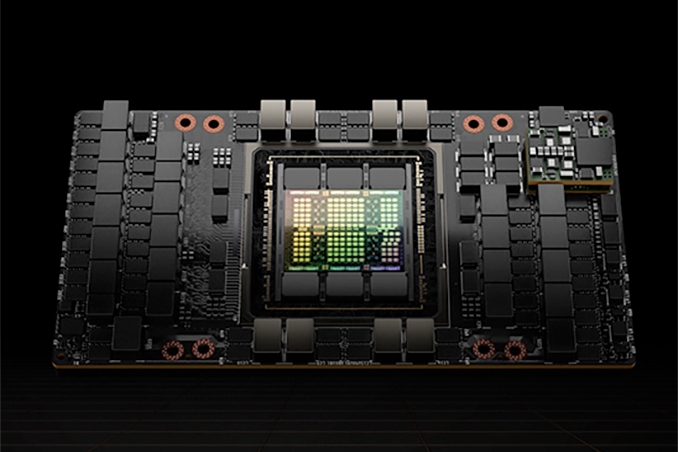
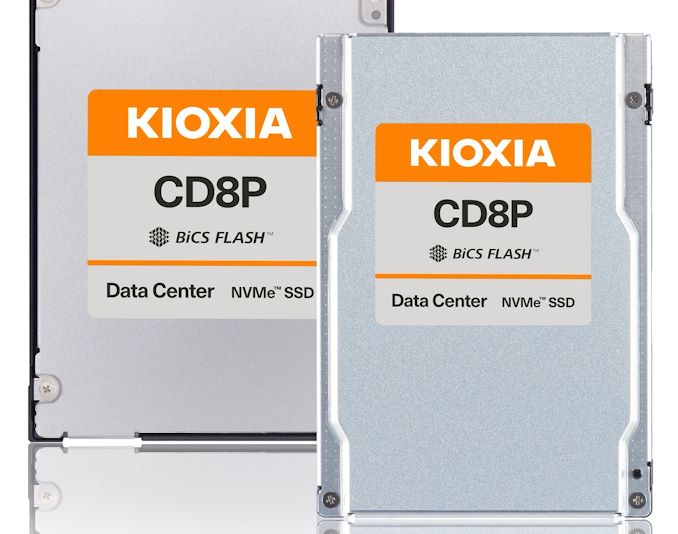


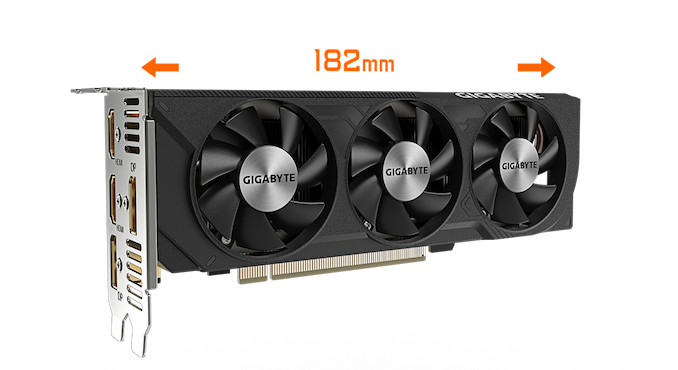
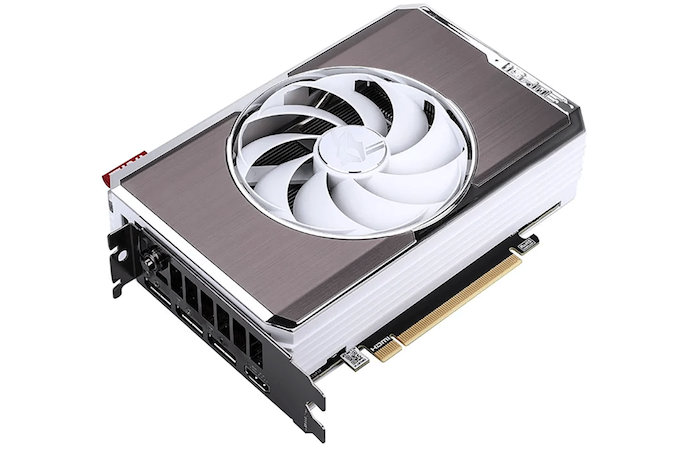

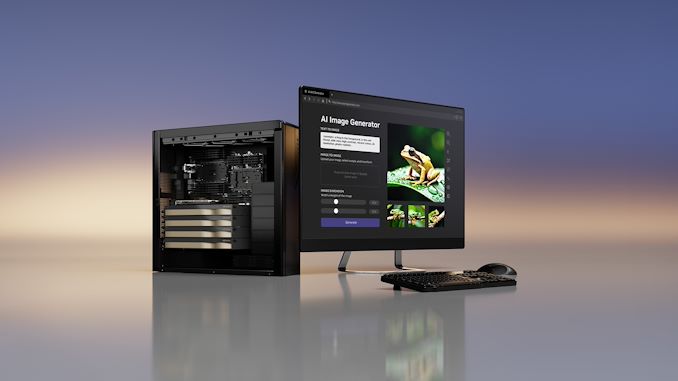

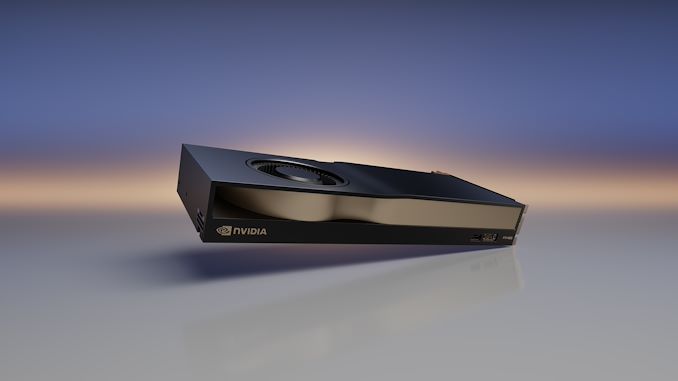
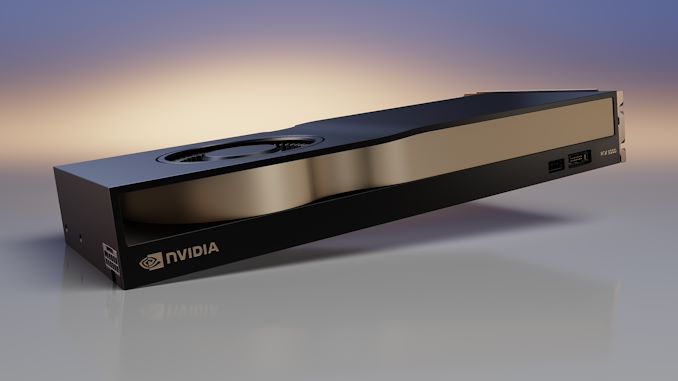
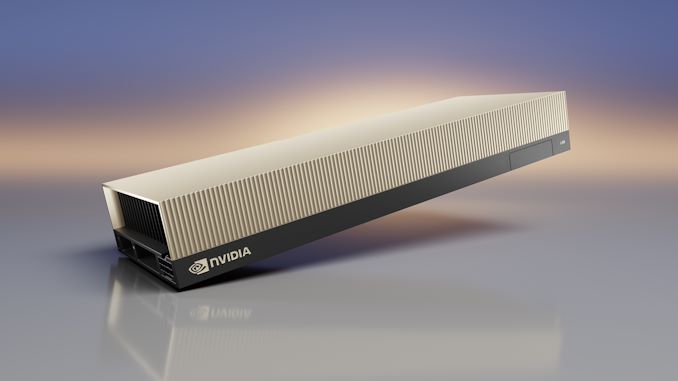
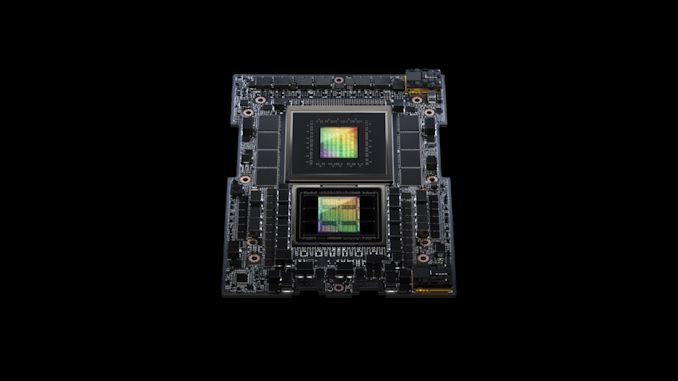
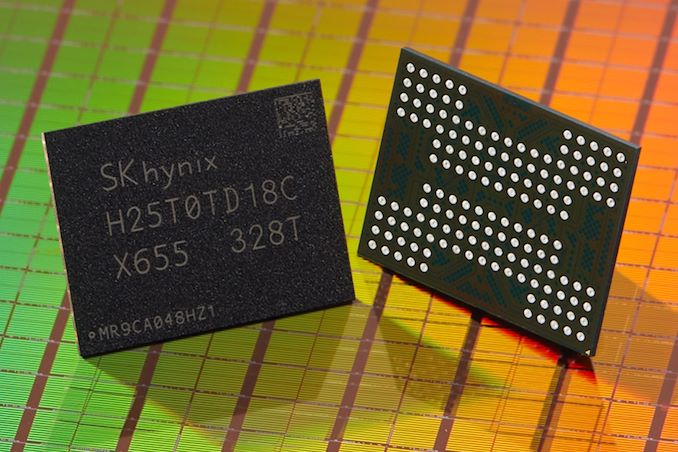
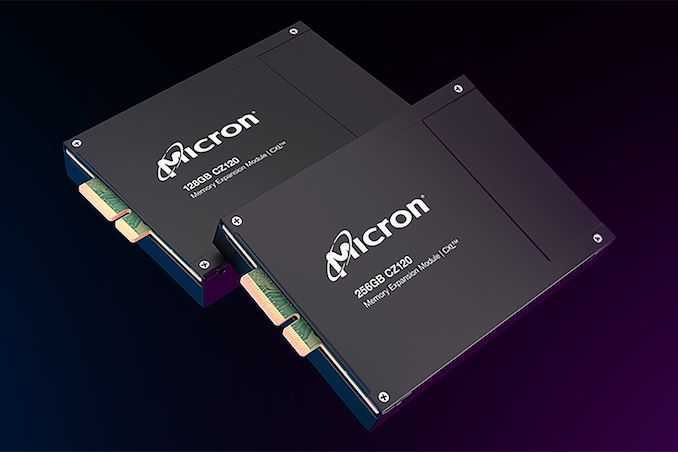
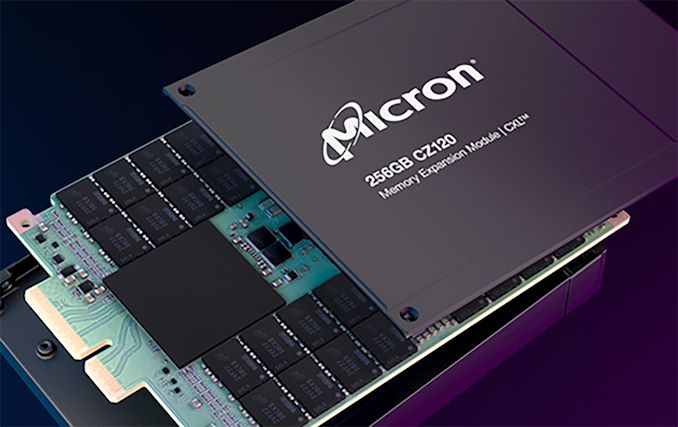
















Bookmarks